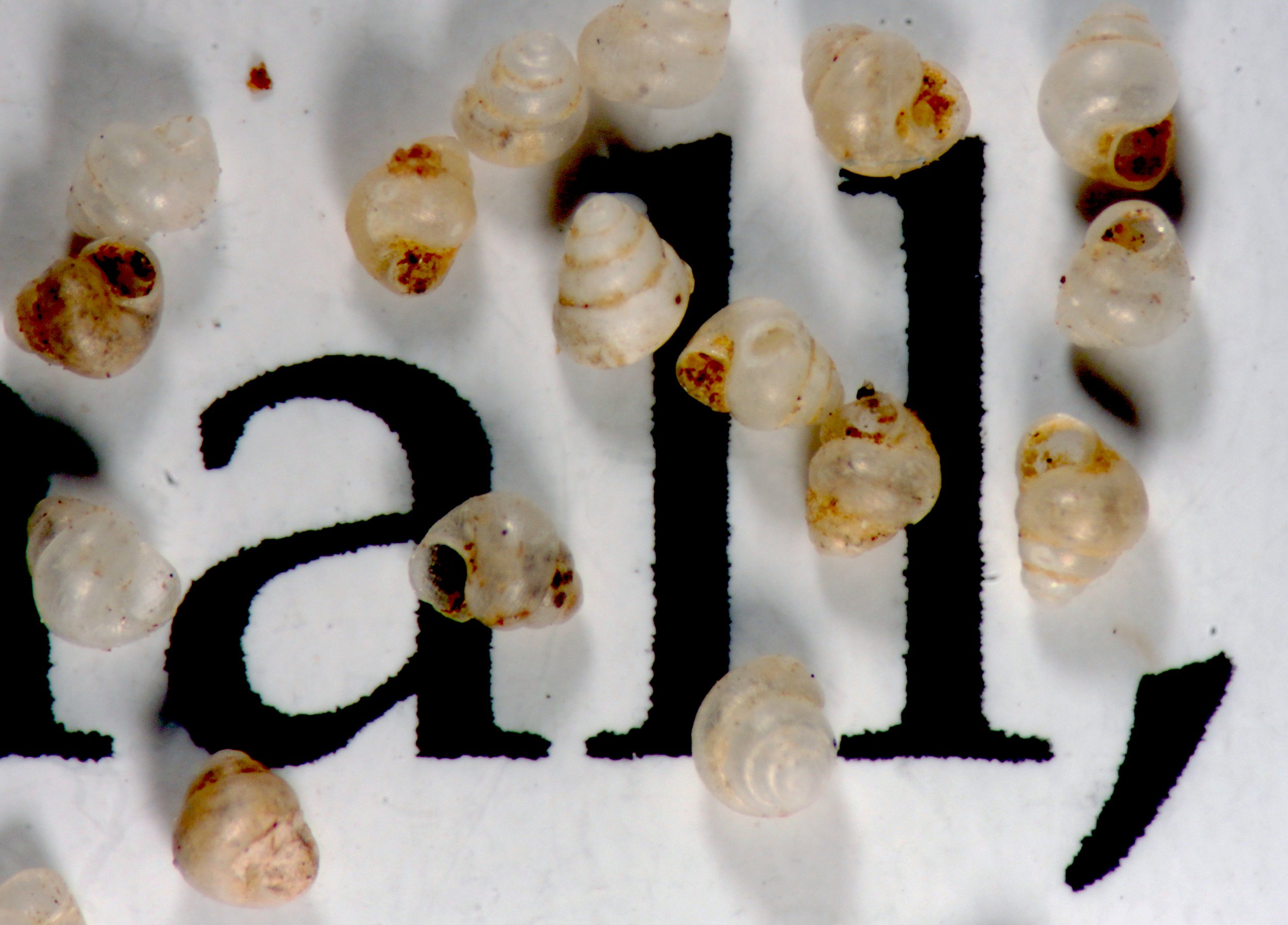
In September we reported that scientists had found the world's tiniest snail, measuring 0.88 millimeters (0.03 inches) across, in southern China. But apparently snail size records are fleeting. Now researchers have discovered and described an even smaller snail in northeastern Borneo, measuring 0.5 to 0.6 mm (0.02 inches). That's the approximate thickness of five human hairs placed next to one another. The scientists named it Acmella nana—nanus being Latin for dwarf).
In a study reporting the finding, published Monday in the journal ZooKeys, the scientists also described 47 other new species of land snails, most quite tiny. Sabah, the area in Malaysia where the snails were found, is renowned for its biodiversity.
Besides finding the smallest snail, the team found a species with a very strange, curlicue-shaped shell (Ditropopsis davisoni). Lead author Menno Schilthuizen, a researcher at the Naturalis Biodiversity Center and Leiden University in the Netherlands, says the scientists don't yet know what function this species' strange shell serves. It's quite unusual for a land snail, and its narrow, long shape suggests that it would be fragile, he says.

To find these tiny snails, researchers scoured areas with outcroppings of limestone, a rock that contains the calcium the creatures need for their shells (which they get by scraping off bits of stone with their rasping mouthparts). In such areas—for example, at the base of cliffs—the scientists collected soil and leaf litter and placed that into a bucket of water; once the earth settled to the bottom, the shells would float to the surface, as they often contain air pockets, Schilthuizen explains.
Almost all of the snails have already died before being found, so while finding their shells is vital for classification, it doesn't tell the biologists everything they'd like to know about the animals' biology—the soft bodies are usually long decayed. It's unclear exactly where many of these snails live, for example, or what they feed upon.
It's probable, though, that Acmella nana has gills; its shell contains a door-like structure called an operculum, characteristic of a group of snails that all possess such water-breathing organs, Schilthuizen says. Thus, it probably lives in wet areas, such as the water-rich rock walls of caves.
Eike Neubert, a researcher at Bern, Switzerland's Natural History Museum who wasn't involved in the paper, says that the real novelty here is not necessarily the smallness of Acmella nana but the fact that the scientists found 48 new species. The study "shows that we are far away from understanding biodiversity" and need more surveys like this, he says.
Correction: A previous version of this article incorrectly stated that the study detailing Acmella nana was published in the journal Zootaxa. It was actualyl published in the journal ZooKeys.
Uncommon Knowledge
Newsweek is committed to challenging conventional wisdom and finding connections in the search for common ground.
Newsweek is committed to challenging conventional wisdom and finding connections in the search for common ground.
About the writer
Douglas Main is a journalist who lives in New York City and whose writing has appeared in the New York ... Read more





